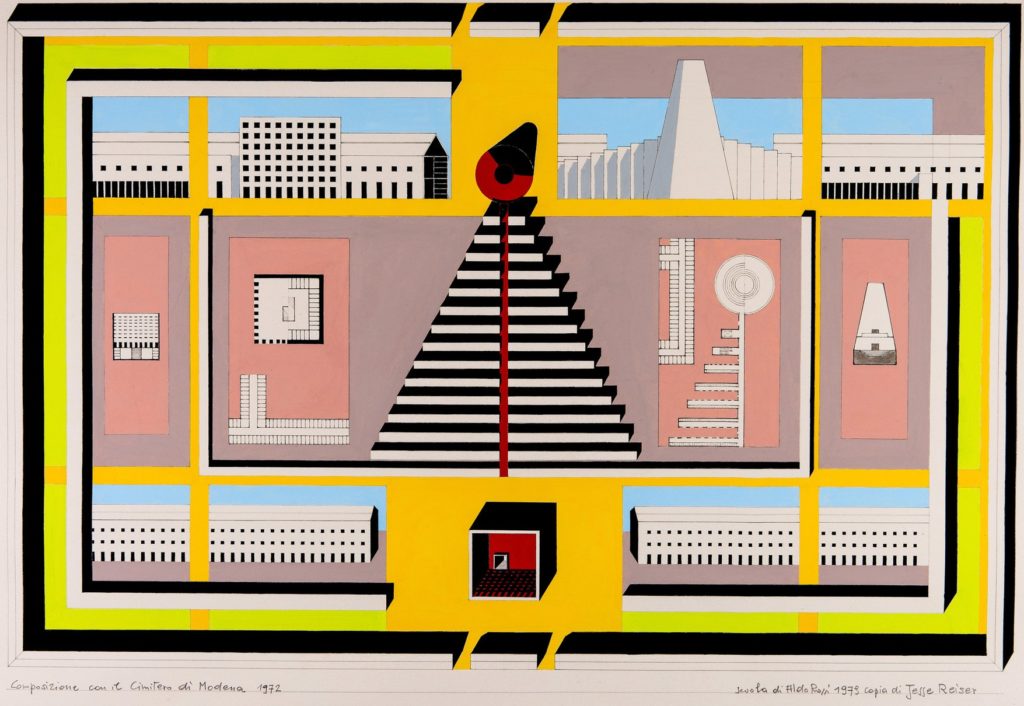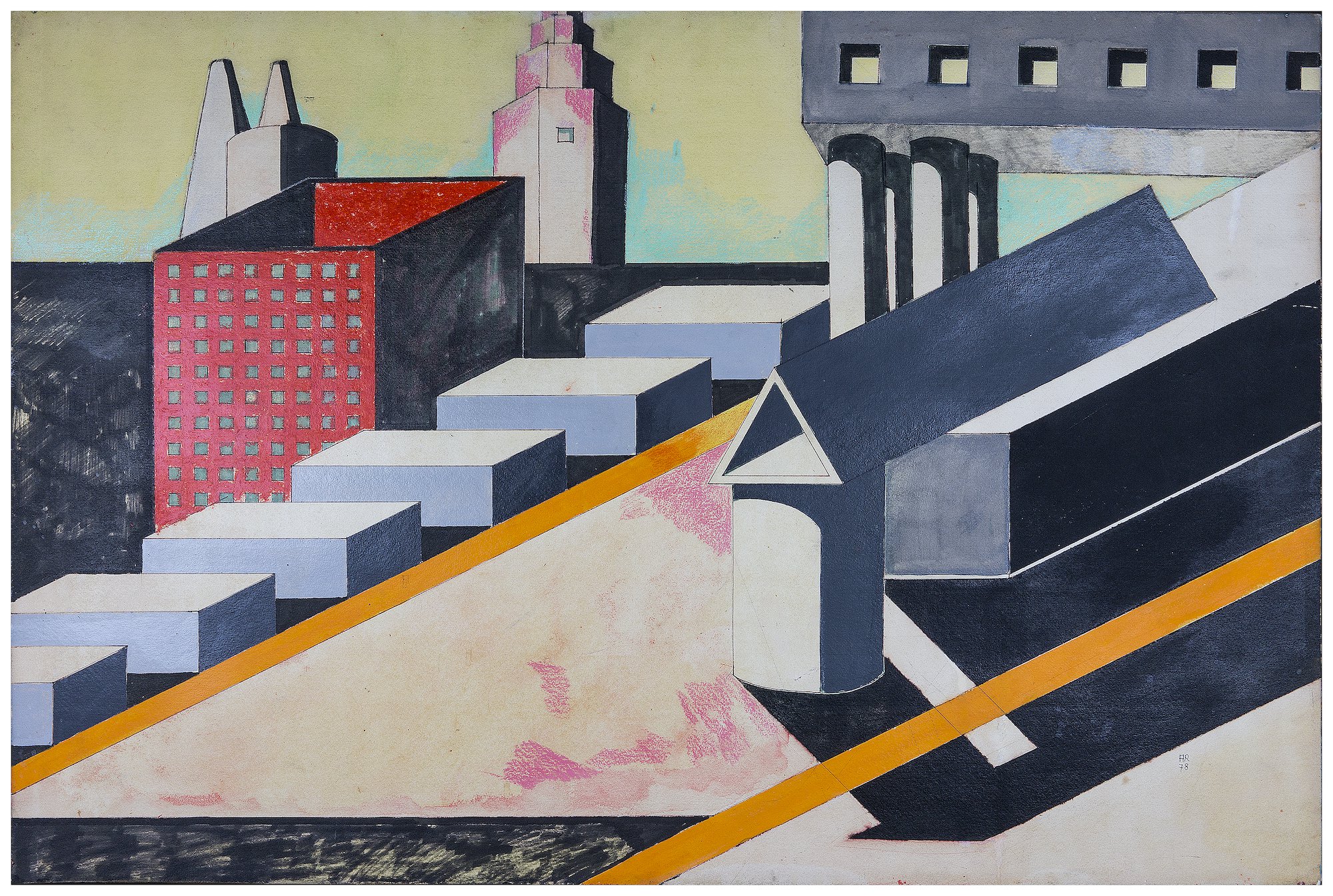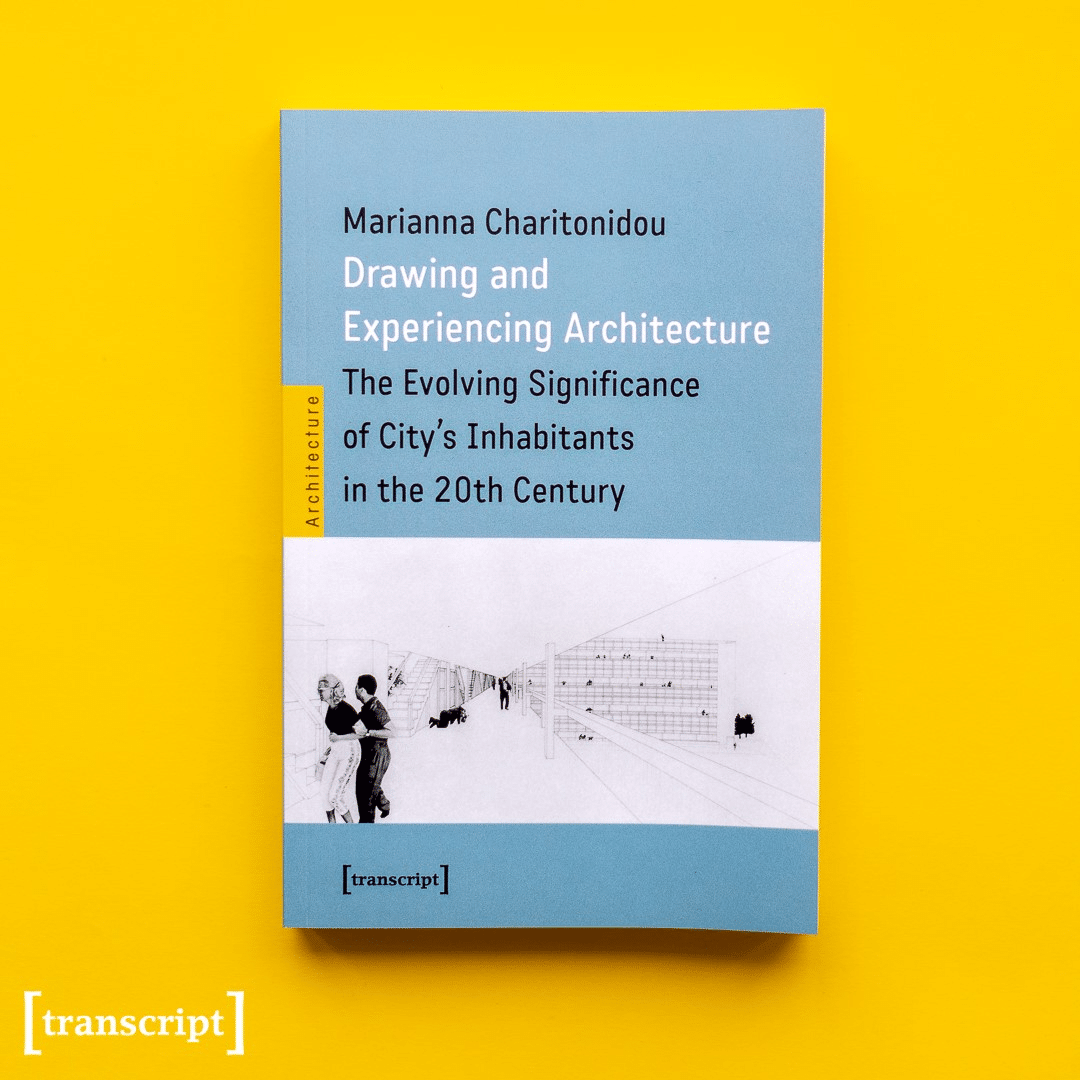Aldo Rossi: Transforming Artefacts into Objects of Affection
Michael Sorkin, in Drawings for Sale, draws a distinction between two levels of the impact of architectural drawings on their spectator: ‘the drawing as artefact and the drawing as the representation of certain ideas about some architecture’. Sorkin argues that the power of the impact of a drawing on its spectator depends on the interaction of these two different levels, underscoring that ‘architectural drawing almost inevitably contains a rhetorical element, the essay to produce conviction about the building’s rightness’. [1]
Architects, through the design process, address ‘observers’, who are called to interpret their architectural representations, and ‘users’, who are destined to inhabit the spaces they conceive. In the case of Peter Eisenman, John Hejduk, Aldo Rossi and Oswald Ungers’ approaches, the ‘observers’ became more central than the ‘users’, while maintaining an instance on importance of human spatial experience. The critique of functionalism, the intensification of the interest in the reinvention of the modes of representation, and the rise of architectural drawings to art-objects lead to a prioritisation of the ‘observers’ of architectural drawings over the inhabitants of architectural artefacts.

Despite Rossi’s insistence on ‘human living’, ‘living history’ and the experience of architectural artefacts as ‘objects of affection’—preoccupations that became even more important for him during his stays in the United States—the introduction of his theory and the exposure of his drawings to the American scene coincided with a prioritisation of the observers’ role over the inhabitants’ role. In parallel, his interest in collective memory, despite his intention to take into account architecture’s civic effectiveness, contributed to the transformation of inhabitants’ experience into an abstract category. This seems paradoxical if we recall Rossi’s interest, in The Analogous City, in the dialectics of the concrete and the ‘capacity of the imagination born from the concrete’. [2] In a similar manner, the conception of the city as a ‘living collage’ and the rejection of any unitary vision of urban reality, as expressed in Cities within the City, privileged observers over inhabitants. [3]
The starting point of Rossi’s pedagogy in the United States was the intention to capture the reality and the ‘living history’ of American cities and culture. This intention was trapped between two opposing forces: a trend of raising architectural drawings’ artefactual value that was paralleled by an appraisal of the individual poetics of an architect’s task, on the one hand, and a trend of establishing methods capable of rendering what is collective in the city architecture’s primordial instrument and apparatus, on the other hand. The dialectic between the two aforementioned opposing forces could be grasped through the act ‘of seeing autobiography […] as the nexus of collective history and creation’ and as their superimposition. [4] As Rafael Moneo has remarked, Rossi’s stance reminds us that ‘the architect does not act in a vacuum in radical solitude, but, on the contrary, knowing what is collective in the city he, as an individual, could penetrate the ground where architecture belongs, and make architecture’. [5] In the case of John Hejduk’s approach ‘the representation of architecture […] is “already” architecture, reality…’. [6]
Rossi’s insistence on the fact that ‘[a] knowledge of the city […] enables us not only to understand architecture better, but also, above all as architects to design it’ and his belief that the act of drawing objects transforms objects into objects of affection show that he did not wish to reduce his drawing practice to the objective per se of his architecture. [7] His fascination with the ‘living history’ of American cities reveals that he conceived architecture’s individual and collective dimension as always intermixed and superimposed in a never-ending game and, in contrast to Hejduk, he would never be satisfied with an understanding of architecture’s reality as architecture’s representation, despite the fact that the way his work was interpreted in the United States contributed to the prioritisation of the ‘observers’ of architectural representations over the inhabitants of real space.

Rossi’s design method was based on an understanding of the act of drawing as a means of transforming architectural and urban artefacts into objects of affection. For this reason, he always conceived compositional process as a mechanism of accumulation of meanings. His disapproval of any tabula rasa conception of architectural forms and of the notion of invention, on the one hand, and his attraction to typology, repetition and living history, on the other hand, reflect his conviction that, firstly, the architect should never act in the vacuum and, secondly, architectural projects cannot refer to a totality, since they are always in a state of becoming and their character is always fragmentary. In his eyes, the individual autobiographical aspect of architects’ creative process and the collective nature of urban reality are in a state of constant interchange. Any fixation to one of them would not satisfy Rossi’s desire to capture architecture and the city’s vivid and evolving reality and their ceaseless interaction. His conception of architecture as inseparable from reality becomes evident when he underscored that he had ‘never regarded architecture as a playing with forms, as being unrelated to reality, deprived of engagement […] but on the contrary as being inseparable from reality’. [8] The elaboration of the concept of analogy helped him distance himself from a dialectical understanding of repetition, as it becomes evident in the following statement:
I could believe that this is a sort of hopeless circle and it could be thought without a dialectic […] in reality it is not the emotions that prevail but the logical development of the facts, which inside themselves are completed or renewed without duplicating themselves perfectly. [9]

Rossi’s stance is characterised by the use of different modes of representation in the same drawing, as, for example, in his drawing for the Cimitero di San Cataldo in Modena entitled ‘Il Gioco dell’Oca’ drawn in 1972, the presentation drawing for the exhibition ‘Roma interrotta’, drawn in 1977, but also the famous collage ‘La Città analoga’ that Rossi produced in collaboration with Eraldo Consolascio, Bruno Reichlin and Fabio Reinhart for the 1976 Biennale di Venezia. In these cases, we are confronted with the use of plans, elevations, axonometric representation, and perspective representation in the same drawing. Rossi’s simultaneous use of elevations, bird’s-eye axonometric views and distorted perspectives within the same drawing could be interpreted as an endeavour to enforce multiple viewpoints.
Rossi was particularly interested in the autobiographic character of architectural design process and in the uniqueness of how each individual interprets architectural and urban artefacts: ‘Hundreds and thousands of people can see the same thing, yet each perceives it in his own unique way. It is a little bit like love: One meets many people and nothing happens, and then falls in love with one destined person.’ [10] Manfredo Tafuri, in ‘The Theater of Memory’, published in Skyline in 1979, argued that the ‘continuous frustration’, which is present in Rossi’s work ‘becomes the opportunity for a restless renewal of the transformational games of materials reduced to a zero degree’. [11]
Extracted, with permission, from Drawing and Experiencing Architecture: The Evolving Significance of City’s Inhabitants in the 20th Century by Marianna Charitonidou, published by Transcript Verlag and available here.

A book launch event for Marianna Charitonidou’s book, Drawing and Experiencing Architecture: The Evolving Significance of City’s Inhabitants in the 20th Century, will take place on 26 April 2023 between 6 and 8pm at the AA Bookshop, 32 Bedford Square (door at No.33), London WC1B 3ES. The event will be open to the public.
Notes
- Michael Sorkin, ‘Drawings for Sale’, in idem., Exquisite Corpse: Writing on Buildings (New York: Verso, 1991), p.36.
- Rossi, ‘La città analoga: tavola/The Analogous City: Panel’, Lotus International, 13 (1976), p.6.
- Ungers et al., ‘Cities within the City: Berlin as Green Archipelago’, Lotus International, 19 (1978), p.95.
- Rossi, A Scientific Autobiography, p.84
- Moneo, ‘Aldo Rossi: The Idea of Architecture and the Modena Cemetery’.
- Moneo, ‘L’opera di John Hejduk ovvero la passione d’insegnare: l’architettura alla Cooper Union/The work of John Hejduk or the passion to teach: Architectural education at Cooper Union’, Lotus International, 27 (1980), p.71.
- Christian K. Laine, Aldo Rossi, ‘The Work of Aldo Rossi’, Crit, 5 (1979): This text was based on an address that Rossi delivered at the Graham
Foundation for Advanced Studies in the Fine Arts in Chicago on 1 March 1979. - Rossi, typescript of a lecture given at Pratt Institute in 1980, Aldo Rossi papers, Getty Research Institute, Los Angeles, CA.
- Typescript of Rossi’s ‘The Meaning of Analogy in my Last Projects’ later published in Cooper Union for the Advancement of Science and Art. School of Art and Architecture, Solitary Travelers (New York: The Cooper Union School of Architecture, 1979), Aldo Rossi papers, Getty Research Institute, Los Angeles, CA.
- Aldo Rossi, ‘A Conversation: Aldo Rossi and Bernard Huet’, Perspecta, 28 (1997), pp.105–113.
- Manfredo Tafuri, ‘The Theater of Memory’, Skyline (1979), 7. This article was reprinted from the newspaper Paesa Sera and was translated for Skyline by Alessandra Latour and Maria Lina.
